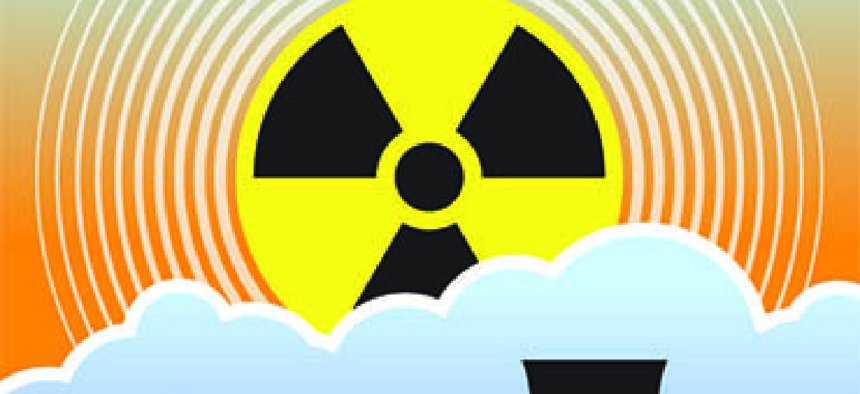Detection test hunts nuclear traces with data

The new nuclear forensics system was tested earlier this summer after a two-year research and development effort.

Over the summer, a team of federal nuclear sleuths tested a new sensor-data consolidation system that could help track down perpetrators of a nuclear attack on a city.
The test of the prototype of the new nuclear forensics systems, said Huban Gowadia, director of the Department of Homeland Security’s Domestic Nuclear Detection Office (DNDO), took place from July 27 to Aug. 21.
In a Sept. 15 blog post, Gowadia said the prototype, dubbed Discreet Oculus, is the result of a two-year research and development effort to design and deploy a ground-based system that uses seismic, acoustic, air pressure, radiation, light, and radio frequency wave sensors to detect signals from an urban nuclear weapon detonation.
This summer’s demonstration, dubbed Mighty Saber 2015, was a combined effort led by the Pentagon’s Defense Threat Reduction Agency (DTRA), DNDO, the Air Force, the Department of Energy’s National Nuclear Security Administration, the Office of the Director of National Intelligence and the FBI.
According to Gowadia, in an actual event, sensor signal data such as that gathered in the demonstration could be combined with other nuclear forensics data to help determine the characteristics of purported nuclear devices and share that information with law enforcement partners and intelligence agencies. Detection sensors in key metropolitan areas are part of a growing nationwide network to send information in real-time to a fusion center for analysis, she said.
Starting in late 2013, a team of more than 50 scientists from across federal research laboratories and industry started working on the Mighty Saber exercise to demonstrate and evaluate post-detonation technical nuclear forensics capabilities that might be used following a simulated detonation of a nuclear device in an urban environment. DTRA said Mighty Saber included several hundred participants representing 15 agencies, laboratories, and industry partners.
DTRA also stressed that Might Saber was based on high-fidelity modeling and simulation tools and signals associated with a nuclear detonation, not on an actual weapon detonation.
The data was generated by computer modeling to simulate a nuclear detonation, then sent to Discreet Oculus sensors and used to characterize the weapon’s performance and determine its potential design features. Labs working on the project also used surrogate data to simulate debris and material in the fake explosion.





